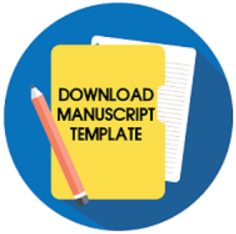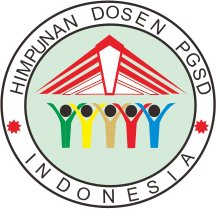The circumstances of literacy numeracy skill: Between notion and fact from elementary school students
Downloads
Downloads
Browne, N. (2005). Young children's literacy development and the role of televisual texts. Taylor & Francis Group.
Cambridge Assessment. (2013). What is literacy? An investigation into definitions of English as a subject and the relationship between English, literacy and "being literate".
Chalkiadaki, A. (2018). A systematic literature review of 21st century skills and Competencies in Primary Education. International Journal of Instruction, 11(3), 1-16. https://doi.org/10.12973/iji.2018.1131a
Department of Education and Skills. (2010). Better literacy and numeracy for children and young people: A draft national plan to improve literacy and numeracy in schools. DES.
Ferrari, J. (2012). Lessons from Asia show way forward for schools. The Australian.
Gatabi, A. R., Stacey, K., & Gooya, Z. (2012). Investigating grade nine textbook problems for characteristics related to mathematical literacy. Mathematics Education Research Journal, 24(4), 403–421. https://doi.org/10.1007/s13394-012-0052-5
Grasby, K. L., Little, C. W., Byrne, B., Coventry, W. L., Olson, R. K., Larsen, S., & Samuelsson, S. (2020). Estimating classroom-level influences on literacy and numeracy: A twin study. Journal of Educational Psychology, 112(6), 1154–1166. https://doi.org/10.1037/edu0000418
Hera, R., & Sari, N. (2015). Literasi matematika : apa , mengapa dan bagaimana ? [Mathematical literacy: what, why and how?]. In Seminar Nasional Matematika dan Pendidikan Matematika UNY, 8, 713–720.
Jordan, N. C., Kaplan, D., Ramineni, C., & Locuniak, M. N. (2009). Early math matters: Kindergarten number competence and later mathematics outcomes. Developmental Psychology, 45, 850–867
Kahan, D. M., Peters, K., Wittlin, M., & Slovic, P. (2012). The polarizing impact of science literacy and numeracy on perceived climate change risks. Nature Climate Change, 2(10), 732-735
Kemendikbud. (2017). Materi pendukung literasi numerasi [Numerical literacy support materials]. Tim GLN Kemendikbud.
Kemendikbud. (2017). Peta jalan gerakan literasi nasional [National literacy movement roadmap]. Tim GLN Kemendikbud.
Kovas, Y., Voronin, I,. Kaydalov, A. Malykh, S.B., Dale,P.S., & Plomin, R. (2013). Literacy and numeracy are more heritable than intelligence in primary school. Psychology Science, 24(10), 2048-2056. https://doi.org/10.1177/0956797613486982
Kress, G. (2003). Literacy in the new media age. Routledge.
Lewandowski C. M. (2015). The effects of brief mindfulness intervention on acute pain experience: an examination of individual difference. WHO Global Tuberculosis Report.
Tai, W. C., & Lin, S. W. (2015). Relationship between problem-solving style and mathematical literacy. Educational Research and Reviews 10(11), 1480-1486. https://doi.org/10.5897/ERR2015.2266
Magdalena, I., Akbar. M., & Situmorang, R. (2019). Evaluation of the implementation of the school literacy movement in elementary schools in the district and City of Tangerang. International Journal of Multicultural and Multireligious Understanding, 6(4), 537-545. https://doi.org/10.18415/ijmmu.v6i4.1029
Manolitsis, G., Georgiou, G. K., & Tziraki, N. (2013). Examining the effects of home literacy and numeracy environment on early reading and math acquisition. Early Childhood Research Quarterly. 28(4), 692-703. https://doi.org/10.1016/j.ecresq.2013.05.004
Meeks, L., Kemp, C., & Stephenson, J. (2014). Standards in literacy and numeracy: Contributing factors. Australian Journal of Teacher Education, 39(7), 106-139. https://doi.org/10.14221/ajte.2014v39n7.3
Morrow, L. M. (2018). Literacy development in the early years: Helping children read and write. Pearson Education, Inc.
Munn, P. (2007). The early development of literacy and numeracy skills. European Early Childhood Education Research Journal, 2(1), 5-18. https://doi.org/10.1080/13502939485207491
Musfiroh, T & Listyorini, B. (2016). Konstruk kompetensi literasi untuk siswa sekolah dasar [Literacy competency construct for elementary school students]. LITERA, 15(1), 2–5. https://doi.org/10.21831/ltr.v15i1.9751
Musliman, R., Rahayah, S., & Din, R. (2013). Assessing students' spatial intelligence for literacy and numeracy skills. Social and Behavioral Sciences, 90, 695–701. https://doi.org/10.1016/j.sbspro.2013.07.142
Neumann, M. M., Hood, M. Ford, R. M., & Neumann, D. L. (2013). Letter and numeral identification: their relationship with early literacy and numeracy skills. European Early Childhood Education Research Journal, 21(4), 489-501. https://doi.org/10.1080/1350293X.2013.845438
Nurgiyantoro, B. (2013). Sastra anak: Pengantar pemahaman dunia anak [Children's literature: An introduction to understanding the world of children]. Gajah Mada University Press.
OECD. (2019). Programme for international student assessment (PISA) Result from PISA 2019. Retrired by www.oecd.org.edu/pisa.
Ojose, B. (2011). Mathematics literacy : are we able to put the mathematics we learn into everyday use? Journal of Mathematics Education, 4(1), 89-100. https://doi.org/10.12691/education-7-10-1
PISA. (2012). Assesment and analytical framework: mathematics, raeding, science, problem solving and financial literacy. OECD Publisher.
Purpura, D. J., Hume, L. E., Sims, D. M., & Lonigan, C. J. (2011). Journal of Experimental Child Early literacy and early numeracy : The value of including early literacy skills in the prediction of numeracy development. Journal of Experimental Child Psychology, 110(4), 647658.https://doi.org/10.1016/j.jecp.2011.07.004
Rakhmawati, Y., & Mustadi, A. (2019). Self-efficacy in primary schools students as potential characters: from the perspective of students' self-ability and interest. Mimbar Sekolah Dasar, 6(1), 55-67. doi:http://dx.doi.org/10.17509/mimbar-sd.v6i1.15221.
Rosenberg, J. (2012). NAPLAN results show top students' standards drop. Sydney Morning Herald.
Segers, E., Kleemans, T., & Verhoeven, L. (2015). Role of parent literacy and numeracy expectations and activities in predicting early numeracy skills. Mathematical Thinking and Learning, 17(2-3), 219-236. https://doi.org/10.1080/10986065.2015.1016819
Stecey, K & Tuner, R. (2015). Assessing mathematical literacy. The PISA experience. Springer.
Umbara, U & Suryadi, D. (2019). Re-interpretation of mathematical literacy based on the teacher's perspective. International Journal of Instruction, 12(4), 789-806. https://doi.org/10.29333/iji.2019.12450a
UNESCO. (2013). Educational indicators and data analysis: National literacy statistics from literacy test.
Winarni, E. W. & Purwandari, E. P. (2020). Project based learning to improve scientific literacy for primary education postgraduate students in science subject. Jurnal Prima Edukasia, 8 (1), 2020, 67-77. http://dx.doi.org/10.21831/jpe.v8i1.30618
The copyright of the received article shall be assigned to the journal as the publisher of the journal. The intended copyright includes the right to publish the article in various forms (including reprints). The journal maintains the publishing rights to the published articles.

Jurnal Prima Edukasia by http://journal.uny.ac.id/index.php/jpe/index is licensed under a Creative Commons Attribution-ShareAlike 4.0 International License.


























